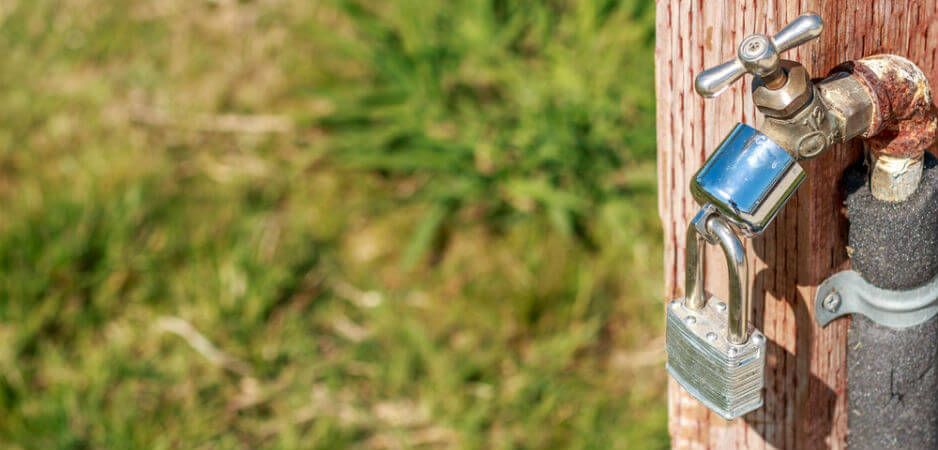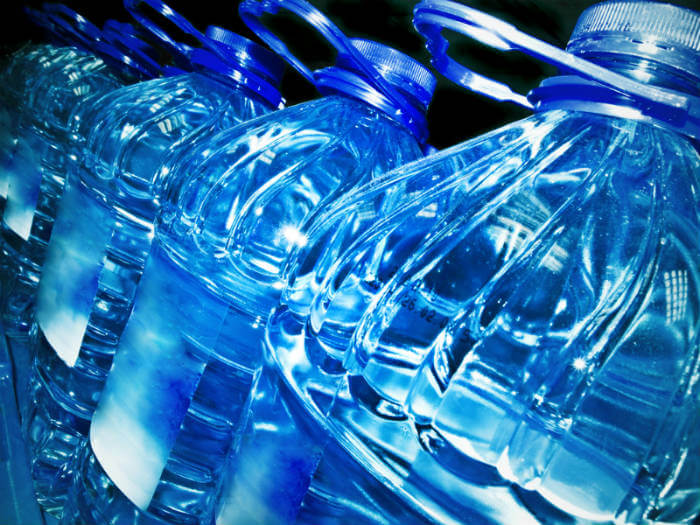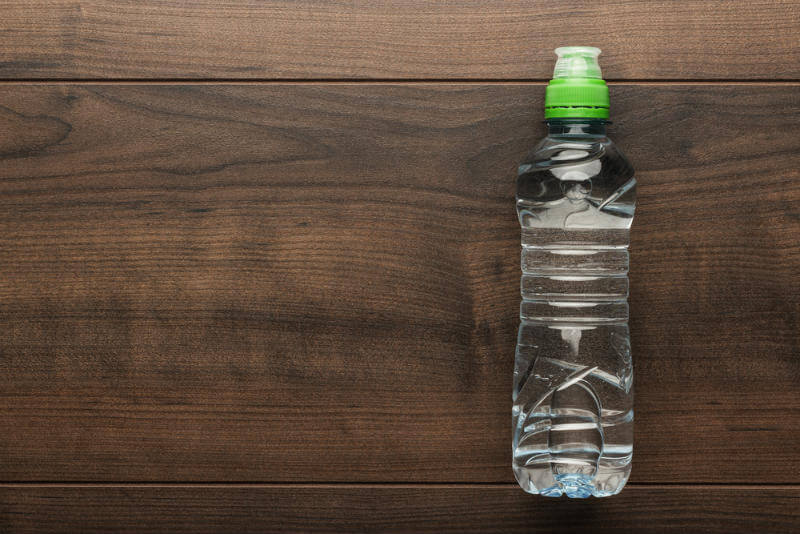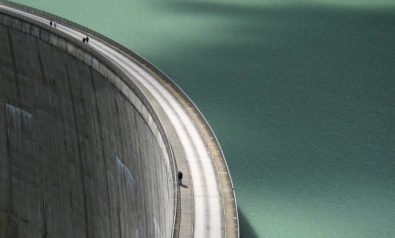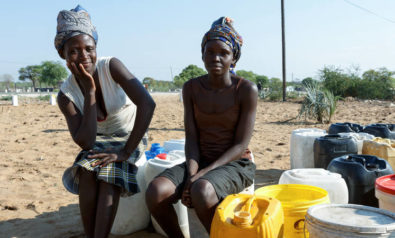In this guest edition of The Interview, Vivian Zhong talks to Renee Robins, the executive director of J-WAFS.
From contaminated drinking water in India to urban food deserts in the United States, the challenges to providing clean water and food for the people of this world are numerous and pervasive.
But great challenges inspire great thinkers, and at the forefront of the battle against food and water insecurity are the researchers who work with the Abdul Latif Jameel World Water and Food Security Lab (J-WAFS) at the Massachusetts Institute of Technology (MIT). Currently funded projects include the development of a nanosensor for contaminant detection and bioengineering nitrogen fixation in the plant organelles of cereal grain crops.
In this guest edition of The Interview, MIT student Vivian Zhong talks to Renee Robins, the executive director of J-WAFS.
Vivian Zhong: Tell me a little bit about the history of J-WAFS and food and water security at MIT.
Renee Robins: J-WAFS is a relatively new initiative. It was launched last year at MIT in order to stimulate and coordinate research around food and water issues on campus in order to improve the productivity, accessibility and sustainability of the world’s water and food systems. While there’s always been a lot of interest at MIT in food and water, it has somewhat wax and waned over the decades. Going back to the 1800s, some of the original research done here was behind the very first water quality standards in the US. Water quality and water supply issues are becoming very important again, and we’re in growth mode, looking to greatly increase MIT research on critical food and water issues over the coming years.
Zhong: Do you think that the end of hunger and poverty is feasible? For example, of lot of UN policies call for the end of hunger by a certain year. In your experience, is that realistic?
Robins: I couldn’t answer that question with a simple yes or no. I would say that we have significant challenges in the coming years and decades, and we need to make some significant progress. There’s a moral imperative to do that, both for humanity and for the planet. There are areas of expertise that MIT can apply which can very much help address some of the more significant challenges. We can’t solve everything with technology, because a lot of the problems require political or social solutions as much as technological solutions. But MIT can make a substantial contribution in a number of critical areas—for instance, desalination and food safety being just two examples.
Zhong: As a whole, are we catching up to the increasing demands for food and water?
Robins: A lot depends on how you look at numbers and statistics. Some show that we’ve made great advances in crop productivity, for instance, over the past few decades, but we still have 900 million to a billion people who go to bed hungry every night. And that number has remained somewhat constant for many years—though as a percentage of the population it’s shrinking because the global population is growing so dramatically.
So the problem is still there and it’s still serious, but there’s also been a lot of improvements. There are different ways you can tell the story—that’s not to say that we don’t have a huge challenge in front of us.
Zhong: Earlier, you mentioned political and social barriers—can you talk about a specific example?
Robins: Let me give you an example of a significant political challenge. There’s a new dam being built in Ethiopia, called the Ethiopian Grand Renaissance Dam, or GERD. It’s very political because it’s on the Blue Nile, which is one of the rivers that feeds the Nile and flows into Egypt, providing most of that country’s water supply. The country upstream is building a dam, and Egypt is very unhappy about it, and there are significant political tensions around it.
MIT convened a workshop a little over a year ago; brought in a number of unaffiliated experts and addressed the technical issues surrounding the dam. We delivered a report to the three governments involved (the river also flows through Sudan), and it was generally well-received, and an agreement was subsequently made for the governments to work together. But it’s still a difficult situation. Water doesn’t pay attention to political boundaries. Here in the US, it crosses state boundaries, and that causes issues because states’ water rights and water management can be quite contentious—at times going to the Supreme Court.
Zhong: Such as with the Flint water crisis?
Robins: The underlying cause of the Flint water crisis was a misguided attempt to save money. Economics, the pricing and cost of water—those are big issues.
If you look at it internationally, a lot of people are saying water is the oil of the future. We’ve been to war many times over oil and maybe in the future over water.
Zhong: Is there anything the public should become more aware of in terms of doing their part to secure food and water supply?
Robins: I really think that people should know where their food and water come from—it’s hard to know that for food in many cases, if you’re buying packaged or prepared food. But you should know where your water comes from, and I would guess that most people don’t. Do you know where your drinking water comes from?
Zhong: No.
Robins: You should! In developed countries, most people take it for granted that they can turn on the tap and clean water comes out—thanks to some mysterious apparatus that exists, that takes water from somewhere, and makes it magically come out on demand, and most people don’t give it a second thought. Although today in California they more likely do. And you don’t know where it comes from, and here you are an MIT student of water and food issues. Don’t you think that’s remarkable? Yet it’s typical.
I think people should also know where their garbage goes and where their electrical power comes from. All of those things people take for granted, and if they don’t understand where their resources come from, and where their waste streams go, then they can’t care about doing the right things in terms of recycling, or reducing water or energy consumption. Information is power, but it’s also a motivator, because if people understand that the stuff that they don’t recycle is going to an incinerator two towns over and being burned—if you understand all that you might be more motivated to toss something in the recycle bin instead of the garbage can.
Zhong: And perhaps not buy more food than they can eat.
Robins: What’s interesting is that food waste is a problem all around the world, but the nature of food waste varies from developing to developed countries. Here, when we think of food waste, we think more of what you throw away from your plate, or when there’s a catered event, you put it all in the garbage at the end of the event.
But if you look at India, they don’t have good cold storage throughout the country. There’s a lot of food that becomes waste on farms because it spoils before it makes it to market. So if you look at the food supply chain from “farm to fork,” you find that waste happens at different points along the way. If you Google “India food waste,” you see all these food landfills. But now if you look on “US food waste,” you get a lot of pictures of uneaten meals and throwing garbage out from your plate. I thought that was a very interesting contrast—just from a quick image search, the difference between the food waste issue in a developing country and a developed country is apparent. And it’s confirmed by data that I’ve seen.
Zhong: So where does our water come from?
Robins: Most of Boston and the surrounding suburbs in Massachusetts are fed by the Quabbin Reservoir, 65 miles away in central Massachusetts. It was built originally in the 1930s because the demand for water in the Boston area had exceeded the supply that was locally available. Four towns were flooded when they created the reservoir in the early 20th century.
Zhong: That’s interesting, especially since the US was very critical of China when it did the same thing to create the Three Gorges Dam.
Robins: This is the path we have been on in many places because people increasingly live in larger and larger cities around the world, and getting adequate supplies of food and water to people in megacities is a major engineering challenge. In many places, we have simply been using our water up. For example, the Aral Sea in Central Asia was once one of the four largest lakes in the world. But due mainly to human consumption for agriculture, it is now only about 10% of its original size, and the local fishing industry has been decimated.
 Zhong: And you can’t really replenish that water supply, can you?
Zhong: And you can’t really replenish that water supply, can you?
Robins: Well, water reservoirs such as aquifers can be recharged by weather processes as long as you don’t withdraw water faster than the rate at which it refills. “Fossil ground water,” on the other hand, is significantly deeper and cannot be recharged. It got there from geological processes rather than climate and weather processes. Like oil, once you use it up, it’s effectively gone.
And there are parts of the world like Saudi Arabia that have largely consumed their fossil water resources. They have very little other fresh water, and most of their water for human consumption is from desalination. They have some of the largest desalination companies in the world, and they are very advanced in their desalination technology. It’s a dilemma for them because desalination takes a large amount of energy, so they’re basically using their oil to produce drinking water.
Zhong: We see a lot of new technological innovations every day—from big research labs inventions to the ingenuity of rural farmers. What have we done, and what can we do to facilitate sharing of technology?
Robins: MIT as a whole is very good at this. We have a technology licensing office that works quite well with faculty and researcher staff in order to help commercialize their inventions. We also have programs, like the Deshpande Center for Technological Innovation, that provide commercialization grants, that can help faculty and students do those next steps beyond the technology development.
And J-WAFS has a program called J-WAFS Solutions, which is our commercialization program. The projects that we provide grants to get plugged into the whole Deshpande infrastructure for supporting commercialization so that important technologies can actually get marketed and scaled up. Beyond providing the funds, they assign mentors to the grantees and help them network with venture capitalists and investors.
Zhong: What about in rural areas? How do you get technology to people who may not have access to it?
Robins: One of our current seed grants, which is for first-step, new and innovative projects, is funding a project that is looking at a new technology for water quality monitoring in rural developing country locations. The technology they’re developing is like dry blood spot testing: A dry sample technique for water monitoring, which would greatly reduce cost and logistical challenges in rural developing country locations. Where shipping large quantities of water for testing, and having labs within reasonable distance with the equipment to do analyses is challenging, this could greatly increase their ability to identify problems in water supplies.
While part of the team is working on the technological development, others are working with local water management agencies in villages and small cities in India to understand their current processes and what it would take for them to take up these new technologies.
Zhong: Is there anything else you think the public, other scientists, and lawmakers should keep in mind in the future?
Robins: It’s a multifaceted problem, and it will take a concerted effort from many different directions. Scientists, inventors and policymakers.
Zhong: A lot of people, scientists and laymen alike, want to help solve this problem, but find it difficult to know where to start. How did you get started in this field, and what advice do you have for others?
Robins: I came to J-WAFS from a long history of working at a number of programs at MIT that were involved in various related areas. For many years, I was based in the Technology and Policy Program, a graduate program in the School of Engineering, and I worked on many projects and programs related to air pollution, urban issues, energy and transportation. Food and water is very central to all of those issues, and it was a very good fit for me.
What I do in my position is rather broad and not as focused as somebody doing research, for instance. So for people who are interested in research, I would suggest finding a place or a problem where you can focus and make a difference. No individual can do it all, but we need a lot of individuals to do a lot of different pieces, because it’s a very broad and wide-ranging challenge.
The views expressed in this article are the author’s own and do not necessarily reflect Fair Observer’s editorial policy.
Photo Credit: Rich Lonardo / Unknown / Ruslan Grumble / Shutterstock.com
 We bring you perspectives from around the world. Help us to inform and educate. Your donation is tax-deductible. Join over 400 people to become a donor or you could choose to be a sponsor.
We bring you perspectives from around the world. Help us to inform and educate. Your donation is tax-deductible. Join over 400 people to become a donor or you could choose to be a sponsor.
Support Fair Observer
We rely on your support for our independence, diversity and quality.
For more than 10 years, Fair Observer has been free, fair and independent. No billionaire owns us, no advertisers control us. We are a reader-supported nonprofit. Unlike many other publications, we keep our content free for readers regardless of where they live or whether they can afford to pay. We have no paywalls and no ads.
In the post-truth era of fake news, echo chambers and filter bubbles, we publish a plurality of perspectives from around the world. Anyone can publish with us, but everyone goes through a rigorous editorial process. So, you get fact-checked, well-reasoned content instead of noise.
We publish 2,500+ voices from 90+ countries. We also conduct education and training programs
on subjects ranging from digital media and journalism to writing and critical thinking. This
doesn’t come cheap. Servers, editors, trainers and web developers cost
money.
Please consider supporting us on a regular basis as a recurring donor or a
sustaining member.
Will you support FO’s journalism?
We rely on your support for our independence, diversity and quality.


